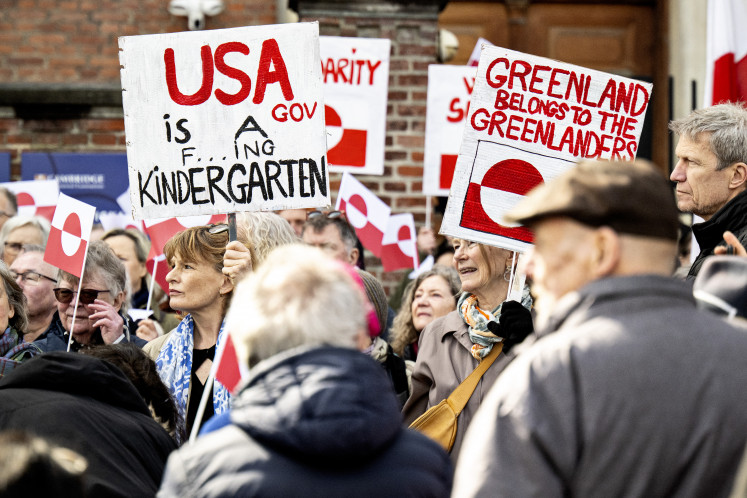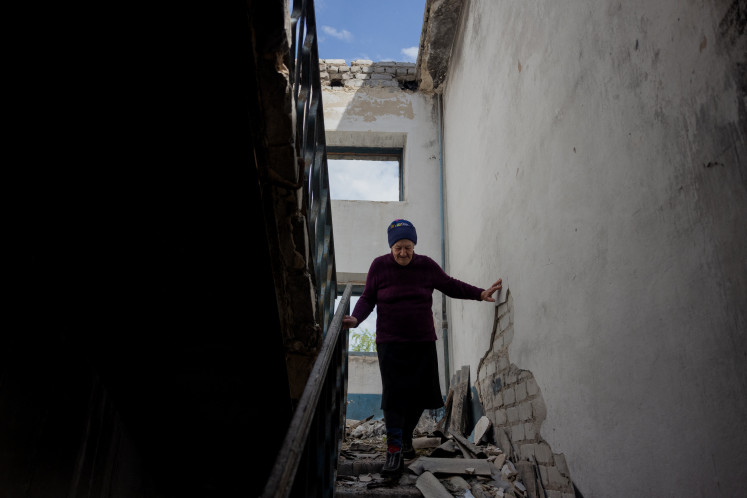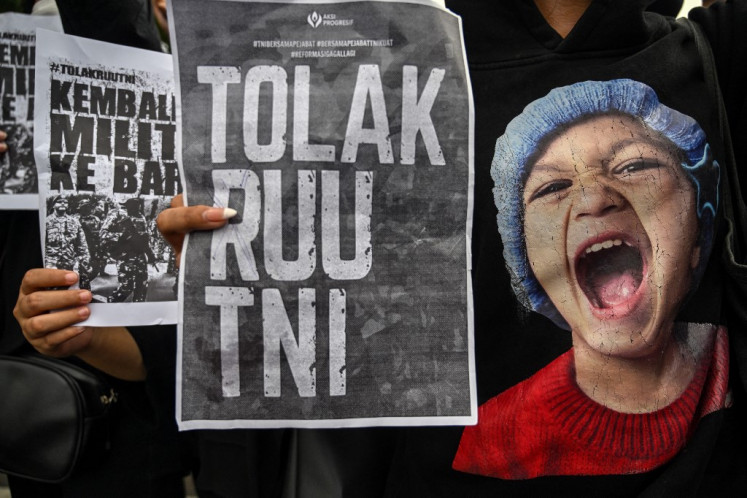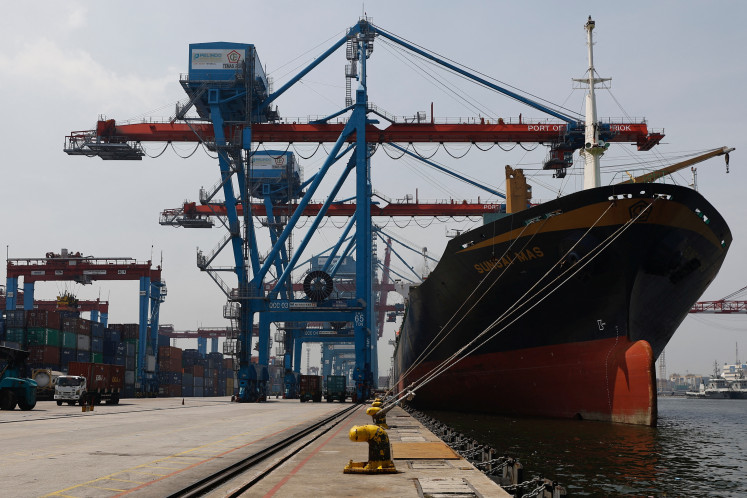Village circular economy to shield against inflation, safeguard food resilience
Change text size
Gift Premium Articles
to Anyone
 A Halim Iskandar Minister of villages, disadvantaged regions and transmigration minister.
A Halim Iskandar Minister of villages, disadvantaged regions and transmigration minister.
W
hile the pandemic has shown signs of easing, followed by an expected economic rebound, the possible food crisis will be another global challenge.
The increasing disparity in the demand for food that residents are facing is exacerbated by the Ukraine and Russia war, which has affected food supplies.
The war between the two countries has caused wheat production to drop by 29 percent, corn by 15 percent and sunflower, as an ingredient for cooking oil, by 72 percent. As a result, the demand for palm oil as a substitute has shown an increasing trend.
Many governments have shown indications of a food crisis in their country by banning the export of vital commodities. For example, Algeria, Argentina and Turkey have banned the export of cows. While other countries like Egypt, Bulgaria, Ukraine and Zimbabwe have banned the export of potatoes. India, Hungary, Serbia, Kazakhstan and Russia have banned the export of wheat. Malaysia has banned the export of chicken.
Meanwhile, Statistics Indonesia’s (BPS) May data shows that the annual inflation rate had reached 3.55 percent.
Of the inflation rate, 0.16 percent is contributed by the fluctuation in the price of eggs, red onions and beef. This can be another indication and sign of a possible food crisis in Indonesia.
The government has taken several crucially anticipatory measures, such as preparing for social protection funds up to next year and subsidies for agriculture product equipment, including fertilizers and plant protection devices.
What is interesting is that the opportunity to boost production alongside efforts to shield from the inflation of food prices came from the food-based circular economy in rural areas. What is more, village funds will be distributed this year for food and animal resilience.
Dynamics of food in Indonesia
Foods cover agricultural commodities in a broad sense, and yet the issues addressed are mostly related to paddy, corn, meat, eggs and fish. Food resilience is indicated by the provision of foods, such as high production, available stocks and a positive export and import balance. The dimension of food coverage covers the equitable distribution of foods and food coverage physically, economically and socially. In terms of food quality and security, it is measured by the target energy consumption of 2,100 calories per person per day (Kcal/capital/day) and 57 grams per person per day of protein.
Unfortunately, the COVID-19 pandemic has reduced the degree of food resilience in many countries, including Indonesia. Between 2020 and 2021, the Indonesia Food Resilience Index dropped 12 points to 59.2 from a maximum of 100; 33 percent of which was due to the management of natural resources, which were really directed at food resilience. The declining food resilience especially affected access or coverage, dropping from 79.0 to 74.9 points. This means that the Indonesian people will have difficulty accessing food.
Two important policies have led to villages serving as a shield against inflation to safeguard food resilience in rural areas. First, Presidential Regulation No. 104/2021concerning the 2022 state budget mandates the priority allocation of a minimum of 20 percent of the village funds for food and animal resilience; this means Rp 13.6 trillion (US$924.88 million) from Rp 68 trillion of the 2022 village funds. The value is much higher than the spending on village funds for food resilience throughout 2015-2011, which stood at Rp 6.59 trillion.
The second policy direction stemmed from Villages, Disadvantaged Regions and Transmigration Ministerial Regulation No. 21/2020 that mandates the achievement of SDGs Desa Goal 2: Villages without hunger. The targets are zero percent prevalence of residents lacking nutrition and the embodiment of a sustainable food agricultural estate. This was followed by Villages, Disadvantaged Regions and Transmigration Ministerial Regulation No. 7/2020 concerning the village fund priority expenditures for 2022, covering exemplary agricultural venture development, food barn development and post-harvest processing etc.
Village circular economy
It turns out that villagers can reap the benefits of the village funds for longer through the food circular economy. Many villages have succeeded in implementing the circular economy, such as Cibiru Wetan village in Bandung, West Java.
In the village, manure, liquid and solid cattle dung-sourced fertilizer, and household and food stall waste are processed into plant fertilizer. Local administrations along with village-owned enterprise (BUM Desa) manage the circular economy in a sustainable manner.
BUM Desa collect various fertilizers produced by local villagers through their ventures, while village administrations encourage groups of farmers to utilize the organic fertilizers sold by the BUM Desa.
Commodities that are planted or bred are selected on the basis of local residents’ needs. This is done by paying attention to the kinds of food that sell well in the villages’ food stalls. BUM Desa receive the vegetables and eggs prior to selling them to food stalls. BUM Desa set the price of the commodities at a lower level than that of the market to ensure villagers’ access to protein.
Local administrations also encourage village residents to consume locally processed foods as supplementary nutritious foods at integrated health posts (Posyandu) and participate in family welfare empowerment programs and other nutrition-raising activities.
Some of the manure can be utilized to feed fish, while the remnants of plants and maggots can be processed and utilized to make pellets to feed cattle.
The village food circular economy has two primary functions. First, endless material circulation, from fertilizing, planting and selling to waste that can be recycled to become fertilizer again, is followed by economic circulation. Every phase is followed by the intake of manpower and innovation so that added economic value during the material circulation can be accumulated. Second, the food circular economy is relatively closed in a village or between villages. Intakes of production and consumption are in the villages themselves, with very minimal transportation costs and profit components so that the provision of foods does not result in significant inflation.
This ensures that the village funds remain in the villages, while local villagers able to utilize the continuously accumulated benefits.










